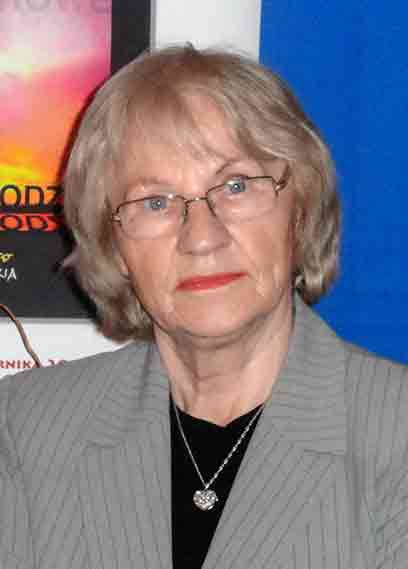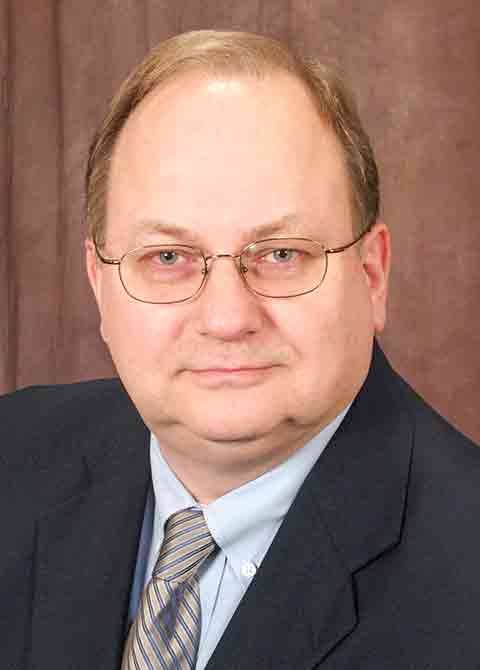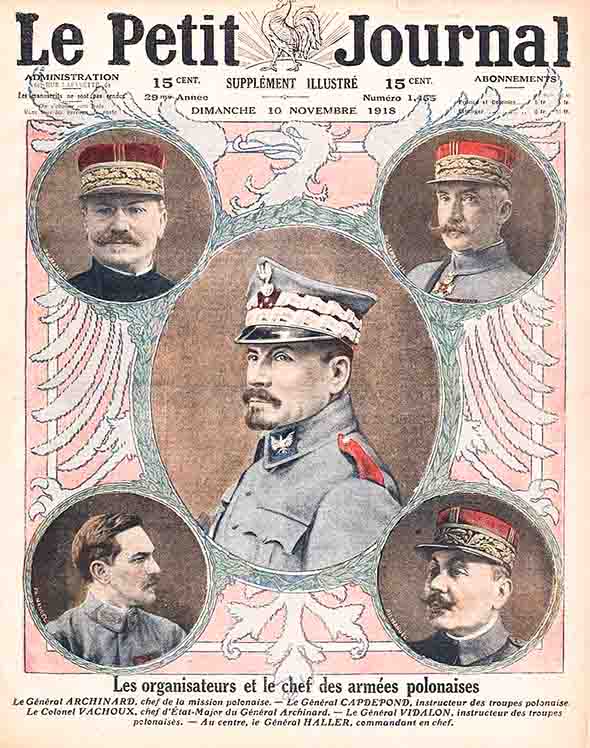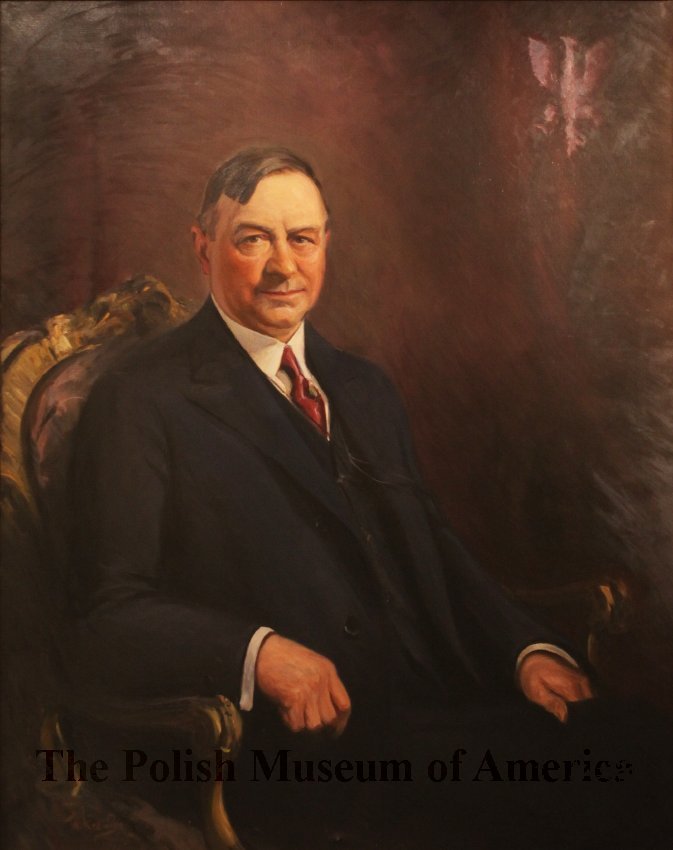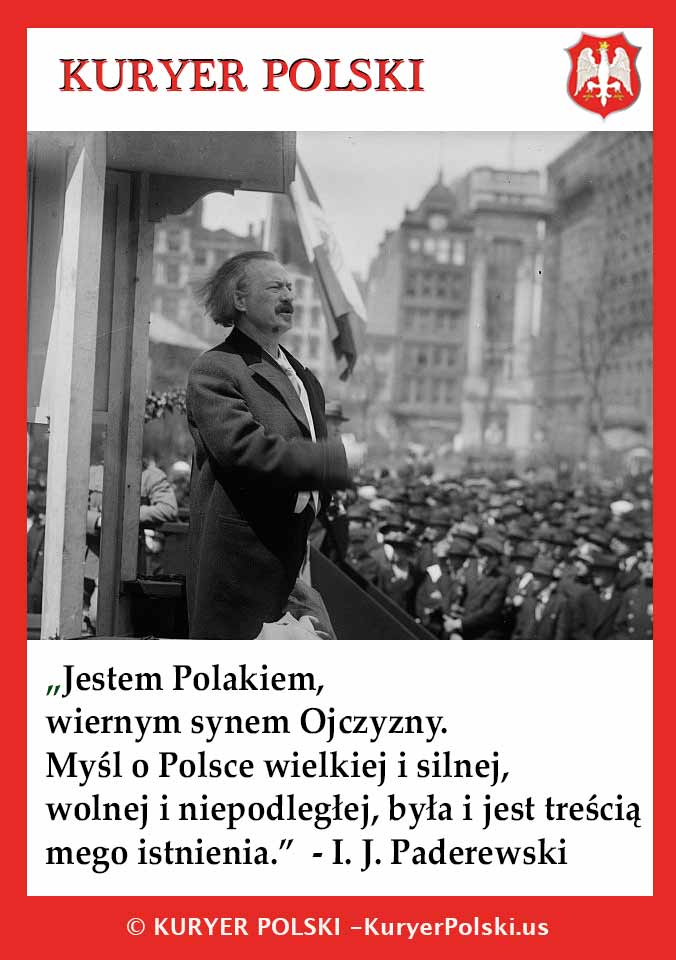The outbreak of World War I raised great hopes for regaining independence among Poles scattered all over the world. They have been preparing for this historical event since the loss of independence. Each generation has played a part in this struggle, each has made mistakes and has its own vision of the future. However, it can be safely stated that the use of a favorable historical moment was possible thanks to the collaboration of outstanding leaders, their leadership talents, dedication and patriotism and awareness of all social groups. We already wrote about the most outstanding leaders of that time, Paderewski, Dmowski, and Smulski. Today we would like to remind you of Teofil Antoni Starzyński - the founder and architect of the Polish falconry in America, a physician, a soldier of the Blue Army, and the creator of the Polish Army Veterans' Association (Stowarzyszenie Weteranów Armii Polskiej, SWAP) in America.
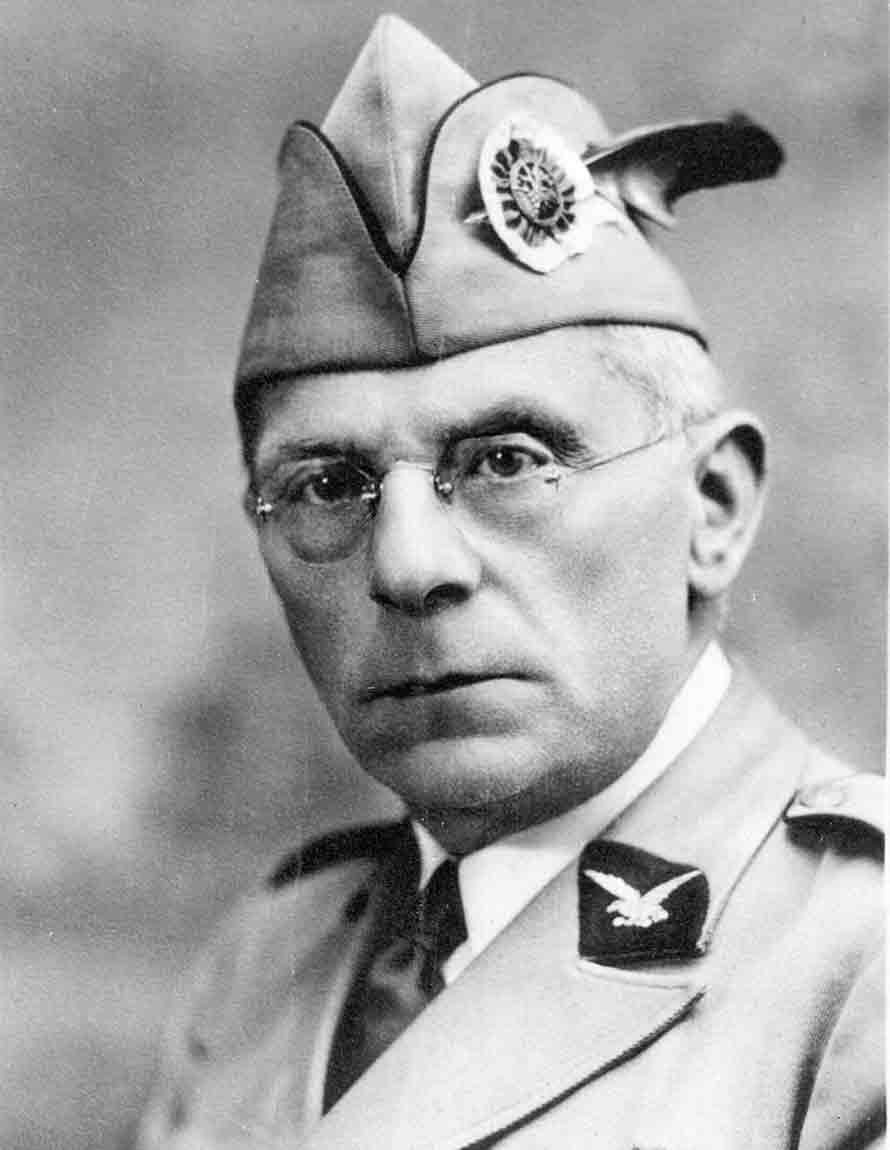
Teofil Antoni Starzyński
(Photo from the Archives of the Association of Polish Army Veterans in America, New York)
Teofil Antoni Starzyński was born on April 14, 1878 in Osowiec, in the Mogilnik poviat (county) in Kujawy, in a patriotic family of impoverished noblemen, who, after an unsuccessful attempt to participate in the January Uprising, dealt with the management of the estate of the Mlicki family in Osowiec. Antoni was the youngest of seven siblings. In 1883 his older brother, Andrzej, to avoid service in the Prussian army, fled to America and settled in Pittsburgh. Other brothers followed in his footsteps - Marcin and his wife joined him in 1885, Ignacy in 1886, and his mother, with her daughter Franciszka, Szczepan and eight-year-old Teofil, emigrated after their sons. In 1889 they were joined by the last of the brothers - Stanisław. The whole family settled in Pittsburgh and started building their existence in exile there. Theophilus enrolled in the parish school, and later continued in the public school. At the age of fourteen he quit his studies and started working as a messenger and loader, and then worked in a Polish pharmacy owned by Stanisław Szarzyński. It was here that he first encountered the ideas of falconry. It is worth recalling these ideas here, because Teofil Starzyński will devote his life to them, he will subordinate to and sacrifice everything for them.
The idea of the Falcon arose on the basis of national feelings and Polish aspirations for independence, and its shape was also influenced by the great cultural and social currents of Europe of that time: romanticism, positivism, and democratism, and above all, the love of freedom and the homeland, inseparable from Latin-Christian culture. Falconry was created out of the need of the heart and spirit, as a result of deep reflection and reckoning of all the mistakes made in the tragically ended January Uprising. The tragic situation of his countrymen was aggravated by the material, biological and spiritual destruction of the Polish nation through the confiscation of land estates, mass deportations to Siberia, prisons and executions of rebellious people, destruction of the national heritage, its culture, education and history.
In such politically dangerous conditions - only three years after the defeat of the January Uprising - a group of young academics, Lviv patriots, supported by the helping hand of former insurgents, decided to break the enchanted circle of widespread powerlessness and depression, laying the foundations for the future, extensively working with young people to increase their physical fitness and sense of spiritual worth. It was a completely new form, although it was inspired by the ancient tradition of Greek gymnasiums, which appreciated the value of harmonious human development. Mens sana in corpore sano - A healthy mind in a healthy body was the first slogan of FALCON (SOKÓŁ), established in 1862 by the Czechs and, 5 years later, adapted to the native needs by Poles in Lviv. SOKÓŁ was to be that universal binder, combining the advantages of the mind and the will of all countrymen into a monolith during the time of slavery, able to fight for independence at the right moment and be able to keep it after winning it. Only in the perfect combination of thought and action can one achieve the desired goal. The eagle as a national symbol had no right to exist. The far-sighted falcon, in the Slavic tradition, was associated with freedom, dexterity, endurance and strength, and - with the effectiveness of its attack.

The flag of SWAP Post in Boston (Photo from the archives of the Polish Army Veterans Association in America, New York)
The chivalrous ethos of SOKÓŁ was born together with its symbols, signs, slogans and ethical requirements, contained in the statute, regulations, as well as in the catechism and the Falcons' commandments. The pedigree of the uniform was of great importance, related to the soldier's insurgent tradition, and the greeting - CZOŁEM, and the slogan clearly defining the character of SOKÓŁ: "HEAD TO THE HOMELAND, CLAWS TO THE ENEMY". These were also chivalrous virtues, which were instilled and nurtured in falcon nests, hosting famous Poles - soldiers as their spiritual patrons. Undoubtedly, the first among them was general Tadeusz Kościuszko. Among the many virtues in force in SOKÓŁ, such as: honesty, punctuality, responsibility, perseverance, duty and courage, there is also brotherhood that puts falcon friends in the unified military formation, regardless of their social and financial status. Under the falcon's banner, representatives of the intelligentsia, craftsmen, aristocrats, workers, enlightened townspeople, and peasants stood in unison. All walks of life, without exception, with their selfless commitment marked their service in the Falcon Order, multiplying its collective strength in the pursuit of freedom.
The strength of SOKÓŁ was described by Tadeusz Romanowicz, the president of this union in the Austrian partition, at a rally on the occasion of the 25th anniversary of the Polish Falconry in Lviv on May 12, 1892:
We do not want strength before the law or above the law - we want strength for the service of law and justice, (...) we want it so that the higher goals and aspirations of the national spirit could realize their real basis.
Thousands of noble Poles and poets were engaged in this glorious mission, fulfilling the romantic role of the nation's spiritual guides. Among them were: Adam Asnyk, Jan Kasprowicz, Mieczysław Romanowski, Maria Konopnicka, Henryk Sienkiewicz, Michał Bałucki, Wacław Gąsiorowski, Karol Bunsch and others. It is worth remembering that Maria Konopnicka wrote the words of "Rota" for the celebration of the 500th anniversary of the Battle of Grunwald. Feliks Nowowiejski composed music for them at the request of the authorities of the falcon association. This song was taught in all falcon nests, in the country and abroad, where SOKÓŁ traveled in tireless flight to seize new masses of Poles under its wings.
"Rota" became the flagship song of the Grunwald SOKÓŁ Rally, which was attended by Falcons in the number of 8,000 girl- and boy-guides, giving on 14 and 15 July 1910 in Krakow a previously unseen show of physical fitness, discipline and military discipline. And "Rota" from that moment became the second national anthem... SOKÓŁ - despite many obstacles - invariably linked its fate with that of the nation. That is why the falcons' nests, where young people gathered for exercises and other program activities, were full of national souvenirs and symbols. For the activists of this movement, body exercises (today known as physical education) were only one of many necessary elements to achieve the ultimate goal. This great goal was the resurrection of Poland!
Nineteen-year-old Teofil Starzyński, fascinated by such noble ideas, in 1897, with the help of the owner of a sausage shop, founded the Falcon's nest in Pittsburgh. From that year he began to study pharmacology, graduating in 1901. He then opened his own pharmacy, and during the smallpox epidemic (1903) carried out preventive vaccinations in Polish districts. He continued his education and was the first Pole to graduate in 1904 from medical studies at the University of Pittsburgh.
In addition to his professional work, Teofil Starzyński was wholeheartedly involved in work in Falconry. He understood that the Falconry was able to fight with weapons in hand and prepare cadres for the liberated Polish state. At the first nest meeting, he became its vice president. He was quickly promoted in the structures of the organization. At the fourth Congress of the Polish Falcons (Związek Sokolstwa Polskiego, ZSP) in America, held in Buffalo in July 1899, he chaired the deliberations committee and was elected vice-president of the ZSP Main Department. In January 1890 he purchased a building for the Falcon in Pittsburgh, which he equipped with gymnastic equipment. He was one of the most active activists of the independence movement of the so-called Free Falconry. At an extraordinary falconry convention in 1912, he supported the unification of the Falconry into an independent organization of a liberational character. He was elected president of the United Association of Polish Falcons. Falconry was the first organization to begin military preparations to fight for a free Poland.
Military training - although usually conducted secretly - from the beginning of FALCON's existence - ran in parallel to other program activities. Special internal ciphers were used to transmit information between nests scattered around the world, with the help of which the action plan was coordinated and updated. All falcon nests were covered by intensive military training.
The glorious masterpiece of the Falconry overseas was the establishment of the Kościuszko Foundation, which carries out its mission to this day, as well as organizing many military courses and NCO schools, training sanitary services and providing financial aid to Poland. When World War I began to take its death toll, the Polish Falcons in America, shaken by the fate of their compatriots forced to fratricide by the invaders, were the first to hand over a memorandum to President Wilson demanding the rebuilding of Poland. FALCON delegation headed by the then president - Teofil Starzyński, was kindly received and assured by the president of the United States of his support for Polish independence efforts. These truly fraternal deeds were supported by the huge sacrifice of life which the overseas falconry made to its motherland, giving the Polish Army 20,000 well-trained falcon soldiers and officers. The Polish Army in France owes its power to a large extent to the falconry which gives it numerous strengths as well as management and organizational staff. Col. Teofil Starzyński, Ph.D., played an important role in this patriotic work. In 1917, together with other activists, especially an outstanding Polish writer and officer, Wacław Gąsiorowski, he led to the opening of a camp in Niagara-on-the-Lake, training volunteers for the Blue Army. He gave a special order to Falcons to join the Polish Army. He sought funds to equip it and help starving compatriots in Poland. Having fulfilled his duties in the recruitment committee, he himself joined the ranks of the Army of Gen. Józef Haller and in the rank of major he became the head of the medical service. In 1919 he came with the Blue Army to Poland and took part in the battles in Ukraine to establish Polish borders in the East.
It is thanks to people such as Dr. T.A. Starzyński that the powerful Polish Army came into being, which paved the way for Poland to participate equally in the conference ended with the signing of the Versailles Treaty. And it is no coincidence that it was done on behalf of independent Poland by two great, well-known and respected individuals in the world of falcons, Ignacy Jan Paderewski and Roman Dmowski! ...Falcons! Birds and Poland's front guard of the Faithful did not know the history of freedom, our nation did not see it. When we stand together, the oath sounds like a bronze bell. To you Motherland - Hello! To the enemy - a sharp claw! ...
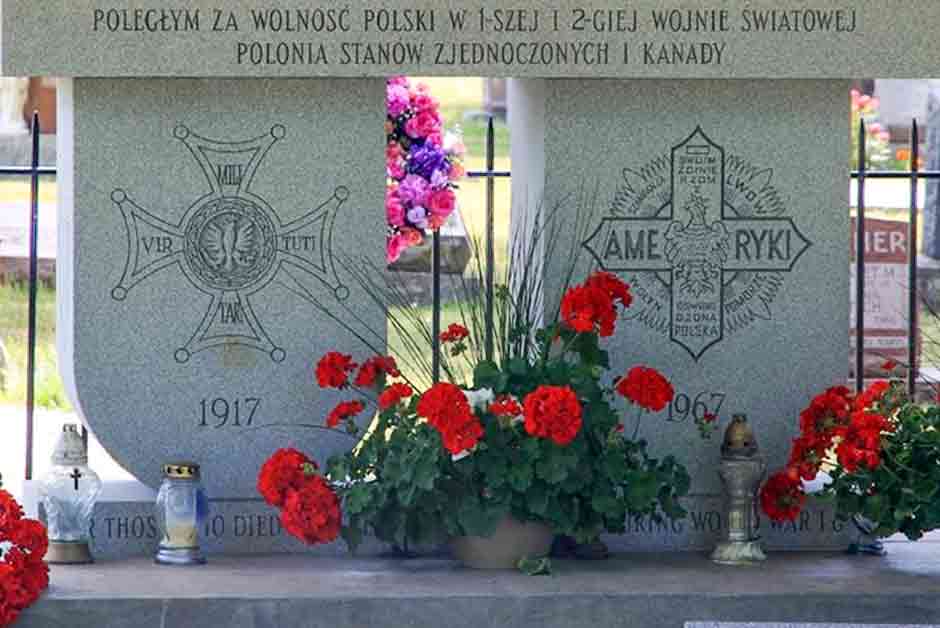
Memorial donated in tribute to the Haller's Blue Army veterans at the cemetery in Niagara-on-the-Lake (Photo: Marcin Murawski)
Many falcons died, many returned as disabled and destitute. And then dr. Starzyński stood by them. In 1920, he organized Hallerczyks in the United States. A year later, SWAP was established, whose first president was T. Starzyński. in 1925 he became president of Falcons again. He is against the "Americanization" of this organization, and is seeking contacts with the Motherland. He stayed in touch with Ignacy Paderewski until the Master's death. During World War II, he sought help from the Allies for Poland. He was one of the creators and founders of the Polish American Congress in 1944 and one of its vice presidents.
At a rally in Warsaw on August 15, 1925, Minister Raczkiewicz decorated the banner of the Polish Falcons in America with the Order of Polonia Restituta. Teofil Starzyński himself received the Commander's Cross of the Order of Polonia Restituta in 1925. Earlier, in 1922, the French government decorated him with the Legion of Honor. In 1961, one of the streets in Szczecin was named after him. In 1962 he was appointed posthumously by the Polish authorities in exile to the rank of brigadier general.
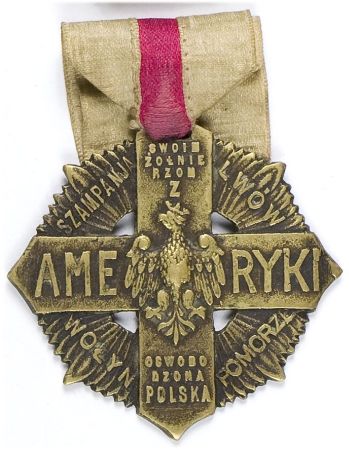
Medal To Her Soldiers from America - Poland Reborn (Photo from the archives of the Association of Polish Army Veterans in America, New York)
He died on April 4, 1952 in Pittsburgh, and was buried in the cemetery at the National Shrine of Our Lady of Częstochowa in Doylestown. The legionaire-and-sanation historians of the Second Polish Republic did not properly appreciate the enormous participation of SOKÓŁ, its creator and guide in the act of independence. A similar situation occurs during the celebrations of the 100th anniversary of independence. There was no posthumous order or memory of the architect of the recruitment of 20,000 volunteers for the Blue Army. The essence of the identity of the American Polish diaspora should be a special concern for our Polish history. It must be remembered that it was our grandfathers from Milwaukee, Chicago, New York, Detroit and many other cities who rushed across the ocean to donate blood for the Motherland at the beck and call. They deserve memory and their proper place in Polish history, and this stage is not complete yet. Perhaps the Polish authorities would finally acknowledge the forgotten emigrants and heroes of the Independent. It is never too late for that.
Translation into English by Andrew Woźniewicz, with the help of Google Translate.



